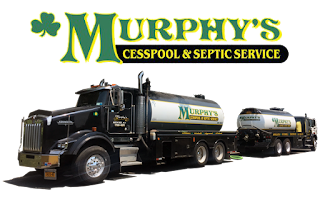Sewer Maintenance Tips | NYSeptic.com
PREVENTING SEWER LINE BACKUP AND OVERFLOW
Not limited to the Long Island, NY area, but everywhere, grease is the most frequent cause of sewer problems. If cooking grease or oil is poured down the drain or flushed down toilets, even when followed by hot water, it eventually cools down, congeals, builds up, and hardens, eventually forming a plug in both residential and commercial sewer lines. Over time, this situation creates backups and overflows. This unfortunate situation can be avoided if you:
- Never pour grease down sink drains or into toilets
- Scrape grease and food scraps from plates, pots, pans, utensils and grills into a can or the trash for disposal
Plant roots are another frequent cause of sewer backups and overflows also which can be very common throughout Long Island's areas covered in grass and top soil. The roots of shrubs and trees naturally seek any water source. The roots probe the sewer line seeking any opening, such as a crack or a poorly sealed joint. Once the sewer line is penetrated, the roots form a ball and block the line. The best way to avoid root blockages is not to plant trees and shrubs close to your home’s cleanouts or sewer service line. However, if trees or shrubs already are growing near the line, watch for reductions in flows down the drain. If a reduction in flow occurs, have a plumber check the line and clear the blockage if necessary.
- Mind Your Cleanouts
- Cleanouts are a direct line to the sewer and consequently to sewer gas smell.
- The following may help with odor problems.
- Make sure traps are full of water, since the water in floor drains and other drain traps tends to evaporate
- Make sure all caps are on and secure
Clean Clogged Drains Carefully
Cleaning clogged drains isn’t as easy as dumping a chemical drain cleaner down and waiting. Did you know that there are separate waste removal lines that feed into a larger main line carrying waste water away from your house into the sewer system?
Long Island residences have a “soil line” which carries kitchen sink and toilet waste to the main line. They are also equipped with a “waste line” which handles showers and bathroom sinks. This means there are two opportunities for clogs before the main line, which itself can be clogged.
Part of sewer drain cleaning is discovering what part of your system has the problem.
Use liquid drain cleaners instead of crystal drain cleaners. Crystal drain cleaners may solidify in your pipes.
Use liquid drain cleaners instead of crystal drain cleaners. Crystal drain cleaners may solidify in your pipes.
Experts say you should never use a chemical drain cleaner to fix a “total blockage”. You’ll need the aid of Murphy's Cesspool & Septic Services, which blasts away the blockage and restores the pipes to a more pristine condition. After using a sewer jetter, it’s a good idea to test the integrity of your sewer systems using a hydrostatic line tester. If there are existing leaks in the pipe system sealed up by debris, that temporary seal was washed away by the sewer jetter. The hydrostatic line tester will help you identify such leaks so you can repair and prevent further damage.
Be Kind to Your Garbage Disposal
Stringy foods such as celery, banana peels, etc. are very hard to grind up and can clog garbage disposals.
Lemon peels seem to temporarily take care of bad odors from disposals.
Run water while operating your garbage disposal. This will help push foods through and help keep the disposal from clogging. (Cold water is recommended.)
Take Care of Your Toilet
Leaking toilets are expensive! Most of the time it is a bad flush valve (the stopper at the bottom of the tank connected to the handle). Any hardware store carries flush valves. They are inexpensive and fairly easy to install.
Make sure the water level in the tank is where it is supposed to be. (See water line in tank).
Toilet water ports or jets can become plugged with calcium buildup from hard water. You will find several ports under the rim of the toilet bowl. Take a metal coat hanger and poke the end of the hanger up into the ports to clear them. Also check the main port at the bottom of the toilet stool.
If your toilet is clogged, don’t use chemical drain openers. Try running a cable through the shower drain (since they are connected). If that doesn’t work, call a professional plumber.






Comments
Post a Comment